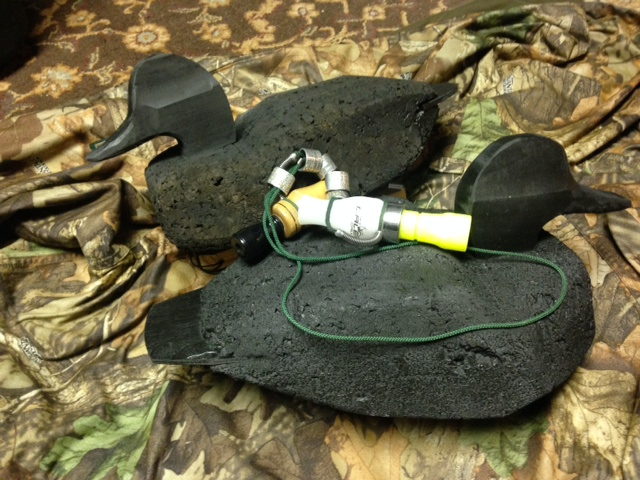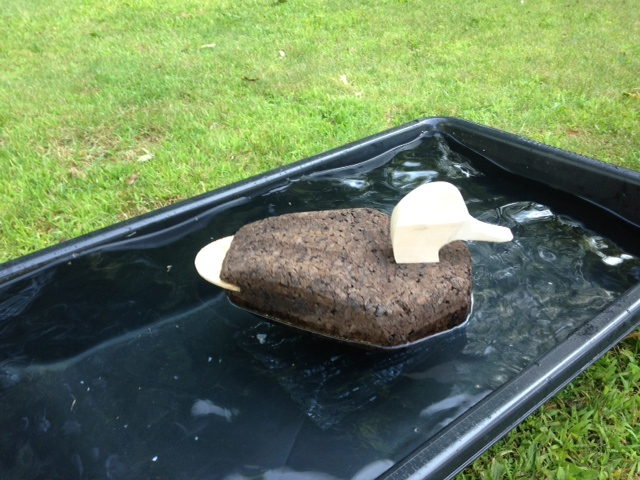Duck hunters looking for a way to add a little spice to their sport may want to try crafting a decoy or two to their gear bag.
I know, the catalogs are full of life-like decoys, some so perfectly shaped and finely colored that they appear to ready to take flight. But know this: hunters have been fooling ducks for eons with pieces of old tires, mud piles, bundles of straw, cardboard silhouettes, painted soda bottles, commercial net floats, and more.
So let’s cut through the perfect paint jobs and feathers that look like a jeweler engraved them and get to the real deal, something a distant duck can see and mistake for a resting cousin.
It starts with a few supplies, and handful of basic tools, and a couple hours of time. The following pictures should tell the story.
Start by searching decoy supplies websites for some cork and roughed out pine heads. Get the rest at your local hardware.

Roughly shape the cork body with a hand saw or power band saw then work into a more realistic shape with rasps. Keep a store bought decoy handy and a few magazine clips to guide your shaping efforts.
If you like the look, slice the tail area with a crosscut hand saw and glue in a thin board to add to the look.
Next, add a treated wood keel then run a long screw through a pre-drilled hole the keel and body to attach the head which can you can shape or detail to your satisfaction.

Float the decoy in a tub and add weight to the keel until the bird looks like it ought to in the water. Hunting magazines, especially the Ducks Unlimited and Delta Waterfowl, have tons of photos to compare to.
Paint the final product to your liking; diving ducks will approached plain black blocks, but mallards like the right colors.












